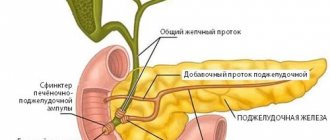A tumor is a new growth whose cells have lost the ability to grow under controlled conditions. This group of diseases is very extensive, so it is divided into a separate branch of medicine - oncology. Oncology studies the mechanisms of development, diagnosis, treatment, and prevention of not only malignant, but also benign neoplasms.
Tumors are presented in a very wide variety and can develop in any organ or tissue. For each type of neoplasm, a number of signs are identified, according to which classification is carried out and a diagnosis is established.
- Tumor atypia
- Features of tumor growth
- Types of tumors
- Why do tumors occur?
- Classification of tumors
- Diagnostic methods
- Treatment of tumors
Tumor atypia
Any tumor consists of stroma and parenchyma. The stroma consists of the extracellular matrix, blood vessels, and nerve endings. Parenchyma is the tumor cells themselves. Their structure, as a rule, differs from normal cells - this is atypia. The difference may lie not only in the structure of the cells themselves, but also in their functioning, metabolism, etc. Therefore, there are several types of atypia:
- Morphological atypia. Can be cellular or tissue. In the first case, tumor cells lose the ability to mature and differentiate, as a result of which they acquire a large nucleus, irregular shape, and other characteristics that distinguish them from normal cells. With tissue atypia, the ratio of various tissue elements changes, for example, the ratio of the thickness of the epidermis and dermis.
- Biochemical atypia. Characterized by changes in tumor metabolism. It is this feature that plays an important role in the uncontrolled growth of newly formed tissue. In tumor cells, almost all types of metabolism change, but the most significant is the change in carbohydrate metabolism, which increases several tens of times. Other features include the predominance of protein synthesis over its breakdown, increased absorption of amino acids and water, accumulation of potassium ions and loss of calcium ions.
- Immunological atypia. Tumors are characterized by changes in antigenic structure. For this reason, the immune system cannot effectively “attack” the changed cells, as a result of which the latter can multiply and grow uncontrollably.
- Functional atypia. This is a consequence of the changes described above. Changes in the structure and metabolism of tumor cells inevitably lead to changes in their functions. This may be increased secretion of hormones, loss of the ability to phagocytose, production of substances that are not normally formed, etc.
Some types of atypia have made it possible to develop specific antitumor drugs. In particular, some cytotoxic drugs used during chemotherapy block the uptake of glutamine and glucose. These substances are used by certain tumors in large quantities and are necessary for the growth and division of pathological cells. Immunological atypia formed the basis for cancer immunotherapy. With the help of special drugs, it is possible to eliminate the “defense mechanisms” of the tumor, which make it “invisible” to the immune system.
Features of tumor growth
The second important feature that is characteristic of all neoplasms is uncontrolled and autonomous growth. That is, the tumor can grow as long as the body exists. At the same time, the regulatory mechanisms that apply to normal cells do not work. The following types of growth are distinguished:
- Expansive growth. Characteristic of benign tumors. The primary focus has clear boundaries due to the capsule. As the tumor increases in size, pushing and compression of surrounding tissues is noted.
- Infiltrating growth. It is characterized by tumor growth into surrounding tissues, which is why it is also called invasive growth. In this case, the boundaries of the primary focus are erased, due to which difficulties arise in determining the exact dimensions. The tumor invades not only healthy tissues of the organ, but also lymphatic ducts and blood vessels, which is a prerequisite for metastasis. This type of growth is observed in malignant neoplasms.
- Exophytic and endophytic growth. It is noted in hollow organs. In the first case, the tumor grows into the lumen of the organ, and in the second - into its wall.
- Unitetric growth - a neoplasm develops from a single focus located in one organ.
- Multicentric growth - the neoplasm originates from several foci located in one organ.
Each type of tumor is characterized by certain growth characteristics. Benign neoplasms in most cases grow slowly, may not increase in size for a long time and even regress. With malignant neoplasms, on the contrary, rapid growth is often observed with infiltration and destruction of healthy tissue.
Book a consultation 24 hours a day
+7+7+78
Incidence of soft tissue sarcomas
In 2002, 3055 cases of soft tissue sarcomas in adults were identified in Russia. At the same time, the incidence rate for both sexes was 2.1. In children, soft tissue sarcomas account for 4-8% of all malignant tumors. Every year, 5-9 cases of such cases are registered per 1 million children.
In the United States in 2004, an estimated 8,680 cases of soft tissue sarcomas could be identified (4,760 cases in males and 3,920 in females). These data apply to children and adult patients.
Types of tumors
Tumors are classified according to various parameters. One of the most important is the degree of differentiation. Based on this feature, benign and malignant neoplasms are distinguished. Benign tumors are composed of differentiated cells. Their cells are as similar as possible to the cells of normal tissues. For this reason, such diseases do not pose a serious health threat in most cases. The following signs are characteristic of benign tumors:
- Slow growth.
- No metastases.
- No infiltration of surrounding tissues.
- No tendency to relapse.
Benign tumors respond very well to treatment, which is carried out surgically. Examples of such neoplasms are fibroids, lipoma, adenoma, papilloma, and atheroma.
Malignant tumors consist of poorly differentiated cells that have lost their function and acquired the ability to divide uncontrollably. They have a negative effect on the body, grow into surrounding tissues, quickly spread throughout the body and lead to severe disruption of the functioning of internal organs.
The key difference between malignant and benign tumors is their tendency to metastasize. Metastasis is a secondary tumor site that occurs in a distant organ or tissue as a result of the movement of cancer cells from the primary site. Each type of cancer is characterized by certain localizations of metastases. The liver, lungs, bones, and brain are most often affected. The spread of tumor cells can occur in the following ways:
- Through the blood (hematogenous metastasis).
- Through lymphatic ducts (lymphogenous metastasis).
- Along nerve fibers (perineural metastasis).
- Upon contact with other organs and tissues (contact metastasis).
In some cases, a combination of several options may occur.
Among other features of malignant tumors, there is a tendency to relapse, difficulty in treatment and a significant impact on body functions due to metabolic disorders. In particular, cancer cells actively absorb glucose, vitamins and other nutrients, disrupt natural biochemical reactions and release toxins that are harmful to healthy cells. As a result, such general symptoms of cancer as cachexia (exhaustion), hypoxia, anemia, and intoxication syndrome develop.
Cancer and its types
HomePatientsAbout cancerYou need to knowCancer and its types
"Cancer"
– a collective concept, a common name for a huge group of diseases that share one common property – the processes of cell growth and reproduction (division) going out of control. During the development of a tumor, one of the body's cells changes and begins the endless process of reproducing its own kind. These cells further spread throughout the body (see below in the section “What is metastasis”). The 10 most common types of cancer are: eight affect organs, two affect the lymphatic and circulatory systems.
What types of cancer are there?
Today, more than 100 types of malignant tumors are known. As a rule, they are named after the organ from which they originate, for example, a primary tumor of the lung would be called “lung cancer”. Sometimes additional clarifications are used, depending on the specific type of tissue from which the tumor originated. For example, “squamous cell lung cancer” is a subtype of lung cancer that develops from the squamous epithelium lining the lumen of the bronchi. This can be important when choosing a treatment method.
In addition, tumors can be divided into solid (“solid”), the cells of which form a tumor mass, and tumors of the hematopoietic and lymphatic system (hemoblastosis), which initially occur as systemic diseases, i.e. involving more than one organ. For example, in leukemia, tumors originate from bone marrow cells, enter the bloodstream and circulate throughout the body with the bloodstream.
Classically, the word “cancer” refers to tumors arising from the epithelium of the skin or mucous membranes. Tumors originating from other types of tissue, such as muscles, tendons, nerves, fat, bones, etc. called "sarcomas". Malignant tumors also include:
- leukemia and multiple myeloma (primary bone marrow tumors);
- lymphomas are tumors originating from peripheral organs of the immune system, for example, lymph nodes;
- melanoma is a tumor that develops from melanocytes, special cells that normally protect the body from the harmful effects of sunlight, they also form “moles”;
- neuroendocrine and carcinoid tumors are tumors that have hormonal activity.
What is the difference between malignant and benign tumors?
It is necessary to distinguish between benign and malignant tumors; their main differences are presented in Table 1. It should be noted that in some cases benign tumors can reach significant sizes. Benign tumors, as a rule, do not pose an immediate threat to the patient's life, with the exception of tumors growing in the brain and spinal cord - these tumors can compress critical structures in these organs and lead to death or cause irreparable harm to the patient's health.
| Table 1. Main differences between malignant and benign tumors | ||
| Benign tumors | Malignant tumors | |
| Growth pattern | “Push back” surrounding tissues | Surrounding tissues grow |
| Capacity for vascular invasion | No | Yes |
| Ability to metastasize | No | Yes |
| Growth form | Regular (for example, round) | Incorrect |
| Relapses | No | Yes |
How does cancer occur and how do tumor cells differ from normal cells?
Many normal cells have the ability to divide, but these processes occur in concert and stop or slow down when the need for the formation of new cells ceases. For example, wounding the skin stimulates the acceleration of cell division processes that form the skin. Once the wound heals, the rate of cell division slows down again to the level necessary only to renew senescent cells.
As the tumor develops, everything changes. Its cells divide almost independently of external signals (autonomously); as mutations accumulate, they become less and less similar to normal ones, their previous functions are lost, and instead only one remains - reproduction. Tumor cells begin to actively absorb nutrients, grow and multiply. Over time, they begin to displace normal cells and acquire the ability for invasive growth (which means germination into other tissues and blood vessels) and metastasis (spread throughout the body through the blood, lymph, along blood vessels and nerves, and so on).
The cause of the appearance of tumor cells (oncogenesis) is the appearance of certain mutations in DNA - disturbances in the genetic code of the cell that arise under the influence of external factors (for example, carcinogenic substances, oncogenic viruses, and so on - see below) or during the process of natural cell division.
There are many mechanisms in the body that block the formation and growth of tumor cells. So, in any cell there are special controller proteins that monitor the process of its division and, if something goes wrong, they stop further reproduction of the cell and start the process of its natural death (apoptosis). The cell can receive a similar signal from the external environment, for example, from other cells of the body. In a tumor cell, the mechanisms of death when damaged are “switched off” and they do not respond to such stimuli and continue to divide.
The immune system also carries out continuous surveillance of such cells, recognizing and destroying those cells that may pose a danger to the body. However, in some cases, the tumor may acquire the ability to “deceive” the immune system and escape its influence.
With a combination of the above factors, in the absence of control over the integrity of the genetic code, the accumulation of mutations continues in the tumor, as a result of which over time it becomes less and less similar to a normal cell and acquires malignant features.
Thus, cancer is a genetic disease, which means that it occurs as a consequence of the development of damage in certain genes. These damages can be inherited from parents—modern oncology knows cases of familial cancer of the breast, ovaries, colon, and so on. However, most often they occur by chance (“sporadic mutations”) during a person’s life. Many environmental factors have a damaging effect on the cell and its genetic code, including:
- smoking;
- occupational hazards, for example, constant contact with asbestos, coal dust, a number of dyes, and so on;
- chronic infections caused by viruses, bacteria and parasites. Thus, in most cases, cervical cancer develops against the background of chronic infection caused by the human papillomavirus (HPV);
- exposure to radioactive radiation.
Be sure to tell your doctor if your relatives have had cases of developing cancer, including those that are different from yours. This can have a big impact on your treatment. Ask your family and friends if you are not sure or don’t know.
Under the influence of these and other factors, cell DNA is constantly damaged. Normally, these disorders are eliminated by special proteins that eliminate such damage (repair system). However, if critical structures are damaged, such damage can lead to malignant degeneration of the cell. Such structures include:
- Proto-oncogenes are structures that are responsible for normal cell growth and division. With certain damage, they can become hyperactive, allowing the cell to survive in conditions in which it would normally die;
- Genes that suppress tumor growth (tumor growth suppressors), like proto-oncogenes, are responsible for the processes of cell growth and reproduction, but unlike the former, they suppress these processes. When the functions of these genes are disrupted, the cell acquires the ability to grow and reproduce uncontrollably;
- Genes responsible for the normal functioning of the repair system. If they do not fulfill their tasks, mutations accumulate in the cell, which over time can lead to its malignant transformation.
What is metastasis?
As the tumor mass grows, its cells change and genetic “damages” accumulate in them. Over time, the tumor grows into the blood and lymphatic vessels. Cells that enter the vessels are carried throughout the body through the blood or lymph flow, ending up in distant organs or nearby lymph nodes, where secondary (metastatic) tumors are formed.
This process is called the process of metastasis; it occurs differently in tumors of different localizations and depends on the characteristics of the blood supply to the tumor and some of its biological properties. For example, distant metastases of colon cancer are most often found in the liver, lungs and brain, while prostate cancer most often metastasizes to the skeletal bones. This is the most advanced stage of the tumor process (IV), which is characterized by the least favorable prognosis. However, the achievements of modern medicine in some cases make it possible to significantly prolong and improve the quality of life in patients with metastatic tumors.
Secondary tumors, as a rule, have the same histological picture as the primary lesion and similar molecular genetic disorders. It follows that metastases of rectal cancer to the liver are treated in the same way as rectal cancer itself, not like liver cancer.
Why do tumors occur?
Until now, scientists have not been able to establish the exact causes and mechanisms of tumor formation, however, thanks to modern molecular diagnostic methods, important details of the process of oncogenesis are known. Disruption of the process of cell division and differentiation develops as a result of changes in DNA molecules. Such a failure can be provoked by various factors called carcinogens. They are divided into three main groups:
- Chemical carcinogens. They are represented by harmful substances that are formed during the combustion of tobacco, are used in production, are present in food, and are released into the external environment. This group includes a very large number of substances, the number of which is approaching 2000. From this list, there are several dozen chemical carcinogens that have the most significant effect on the body and most likely lead to the development of tumors.
- Physical carcinogens. These include radioactive, x-ray and ultraviolet radiation in doses that exceed permissible values. Physical carcinogens, like chemical ones, do not directly affect the formation of tumor cells. They provoke various changes, including disruption of the DNA structure, which cause the development of various neoplasms.
- Biological carcinogens. This group is represented by specific viruses that promote oncogenesis. This group includes some types of human papillomavirus, retroviruses, adenoviruses, hepatitis B and C viruses, etc. Biological carcinogens, unlike the two previous groups, directly affect the genetic apparatus of the cell and change it.
Understanding the mechanisms of tumor development and the discovery of various carcinogens allowed doctors to develop preventive measures. In particular, in order to reduce the risk of developing benign and malignant neoplasms, it is necessary to stop smoking, monitor your diet, avoid working in hazardous working conditions, strengthen your immune system, etc.
Book a consultation 24 hours a day
+7+7+78
Classification of tumors
The simplest and most understandable classification of benign neoplasms. In this case, it is only necessary to know the tissue from which the tumor developed. Taking this feature into account, a diagnosis will be formed. If a benign neoplasm developed from cartilaginous tissue, then the diagnosis will be “chondroma”, from glandular tissue - adenoma, etc.
The division of malignant tumors is much more complex. New growths from epithelial tissue are called cancer or carcinoma (follicular cancer, adenocarcinoma). If the tumor developed from connective tissue, then it is classified as sarcoma (chondrosarcoma, myosarcoma), from nervous tissue - glioma, etc.
The next indicator that is taken into account when making a diagnosis is the degree of cell differentiation. It is graded on a Grade scale and includes the following options:
- GX—cell differentiation cannot be determined.
- G1 - cells are highly differentiated.
- G2 - cells are moderately differentiated.
- G3 - cells are poorly differentiated.
- G4 - cells are undifferentiated.
As the score increases, the aggressiveness of the tumor increases, as does the degree of its malignancy.
Depending on the characteristics of the primary lesion, the presence of metastases in regional lymph nodes and distant organs, malignant tumors are classified according to the international TNM system. The letter T describes the size and growth characteristics of the primary tumor, N indicates the presence or absence of metastases in nearby lymph nodes, and the letter M indicates metastases in distant organs. For each letter a certain index is assigned, as a result the diagnosis may look like this - T3N1M0 or T1N0M0, etc.
Based on the TNM classification, malignant tumors are divided into stages. A localized primary lesion, which does not extend beyond the organ and is small in size, corresponds to the first stage. If the tumor grows into adjacent organs or has distant metastases, then the fourth stage is set.
Diagnostic methods
For modern oncology, the problem of timely detection of tumors, primarily malignant ones, continues to be relevant. In the initial stages, neoplasms do not manifest themselves in any way. The first signs are noted as the tumor grows and the functions of certain organs are impaired. In such cases, patients complain of pain, discomfort, weakness and other nonspecific symptoms, which depend on the exact location of the tumor.
If the tumor is located superficially, for example, in the breast tissue, then it can be palpated. This feature makes diagnosis a little easier, but in order to understand the true nature of the tumor, it is necessary to undergo a comprehensive examination. It includes various imaging methods that help detect the primary lesion: CT, MRI, ultrasound, endoscopy, x-ray.
At the next stage, the doctor is faced with the task of determining the type of tumor, the degree of cell differentiation and other important features. A biopsy, the gold standard for diagnosing tumors, can answer these questions. As a rule, without a biopsy in oncology it is impossible to make an accurate diagnosis and select treatment.
Additionally, to assess the general condition of the patient or to determine sensitivity to a particular drug, laboratory and molecular genetic research methods are prescribed. The exact diagnostic program is always selected individually.
Literature
- Tumor metastasis;
- Atis Muehlenbachs, Julu Bhatnagar, Carlos A. Agudelo, Alicia Hidron, Mark L. Eberhard, et. al.. (2015). Malignant Transformation of Hymenolepis nanain a Human Host. N Engl J Med
.
373 , 1845-1852; - B. N. Ames, H. O. Kammen, E. Yamasaki. (1975). Hair dyes are mutagenic: identification of a variety of mutagenic ingredients.. Proceedings of the National Academy of Sciences
.
72 , 2423-2427; - Chiaho Shih, Robert A. Weinberg. (1982). Isolation of a transforming sequence from a human bladder carcinoma cell line. Cell
.
29 , 161-169; - Apoptosis, or the Way of the Samurai;
- Breast cancer with family history;
- The Immortal Cells of Henrietta Lacks;
- 12 methods in pictures: cellular technologies;
- 12 methods in pictures: immunological technologies;
- A brief history of the discovery and use of antibodies;
- Discovery of monoclonal antibodies;
- Mirabelli, Coppola, Salvatore. (2019). Cancer Cell Lines Are Useful Model Systems for Medical Research. Cancers
.
11 , 1098; - Model organisms: rodents.
Treatment of tumors
The second pressing problem in oncology is the effective treatment of tumors. If a benign tumor can be removed surgically relatively easily, then with a malignant process this is not always possible. Due to the absence of pronounced symptoms, tumor invasion into neighboring organs and vital vessels, and a tendency to metastasize, many patients remain inoperable. In such situations, conservative treatment is used, which includes methods such as chemotherapy, radiation therapy, targeted therapy, immunotherapy, etc. However, in this case, the patient’s chances of a full recovery are reduced. If the tumor has spread beyond the organ, then conservative therapy in most cases will help delay relapse and increase the patient’s life expectancy.
The most effective treatment is possible when the tumor is detected at the earliest stage, after surgical removal of the primary lesion, after which, for some diseases, conservative treatment methods can be used.
Currently, all the efforts of doctors and scientists are focused on solving two pressing problems. On the one hand, methods for early detection of cancer are being developed, and on the other, new and effective treatment methods are being developed.
Book a consultation 24 hours a day
+7+7+78
Diagnosis of soft tissue sarcomas
SIGNS AND SYMPTOMS OF THE DISEASE
The tumor can be easily detected if it appears on the upper or lower extremities and increases in size over several weeks or months. Generally, soft tissue swelling does not cause pain.
In the case of the development of soft tissue sarcoma in the abdomen, symptoms appear that are characteristic not only of a tumor disease. In 30-35% of cases, patients report abdominal pain. Sometimes the tumor puts pressure on the stomach and intestines or causes bleeding. If the tumor has reached a large size, it can be felt in the abdomen.
Only in 50% of cases is it possible to detect the disease in the early stages, since symptoms in patients with soft tissue sarcomas appear only when the tumor reaches a significant size.
Research methods
x-ray is performed to detect spread of soft tissue sarcomas to the lungs.
Ultrasound examination (ultrasound) allows you to examine internal organs and tumor formations. Computed tomography (CT) makes it possible to determine the extent of local spread of the tumor, as well as identify damage to the liver and other organs. In addition, CT is used for tumor puncture.
Magnetic resonance imaging (MRI) can provide more detailed information about the tumor and the condition of internal organs compared to CT. This method is especially useful when examining the brain and spinal cord.
Positron emission tomography (PET) helps to clarify the extent of the tumor process in the body. The study uses radioactive glucose, which is actively absorbed by tumor cells. Biopsy (taking a piece of tissue suspicious for a tumor for examination). Based on various studies, the only reliable method for diagnosing soft tissue sarcoma is to study the tumor under a microscope. At the same time, the type of sarcoma and the degree of malignancy (low, intermediate or high) are specified.











